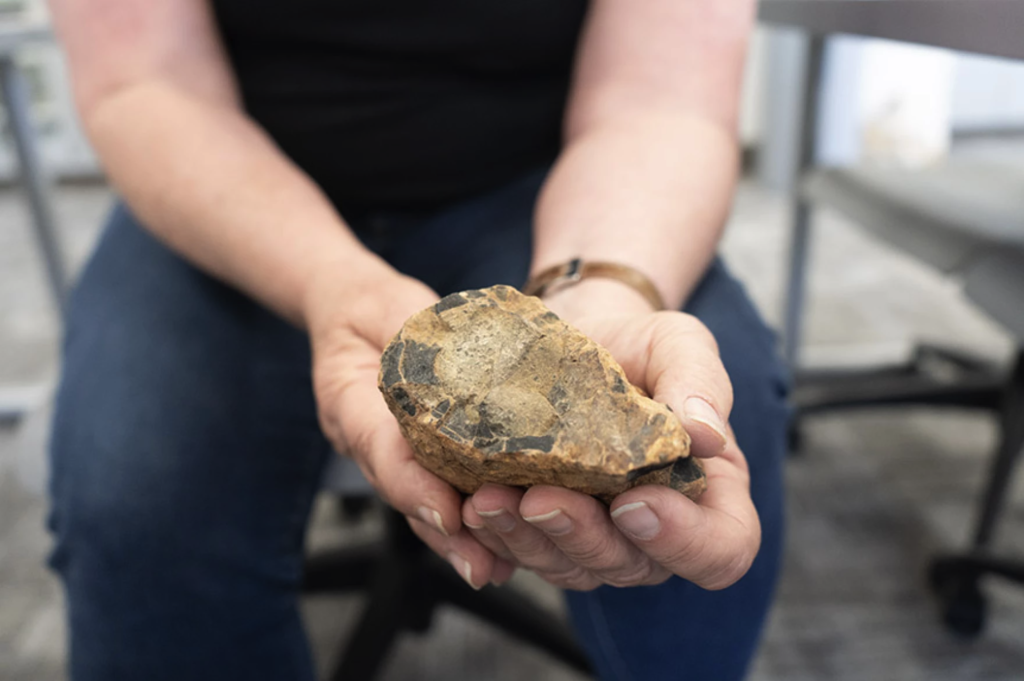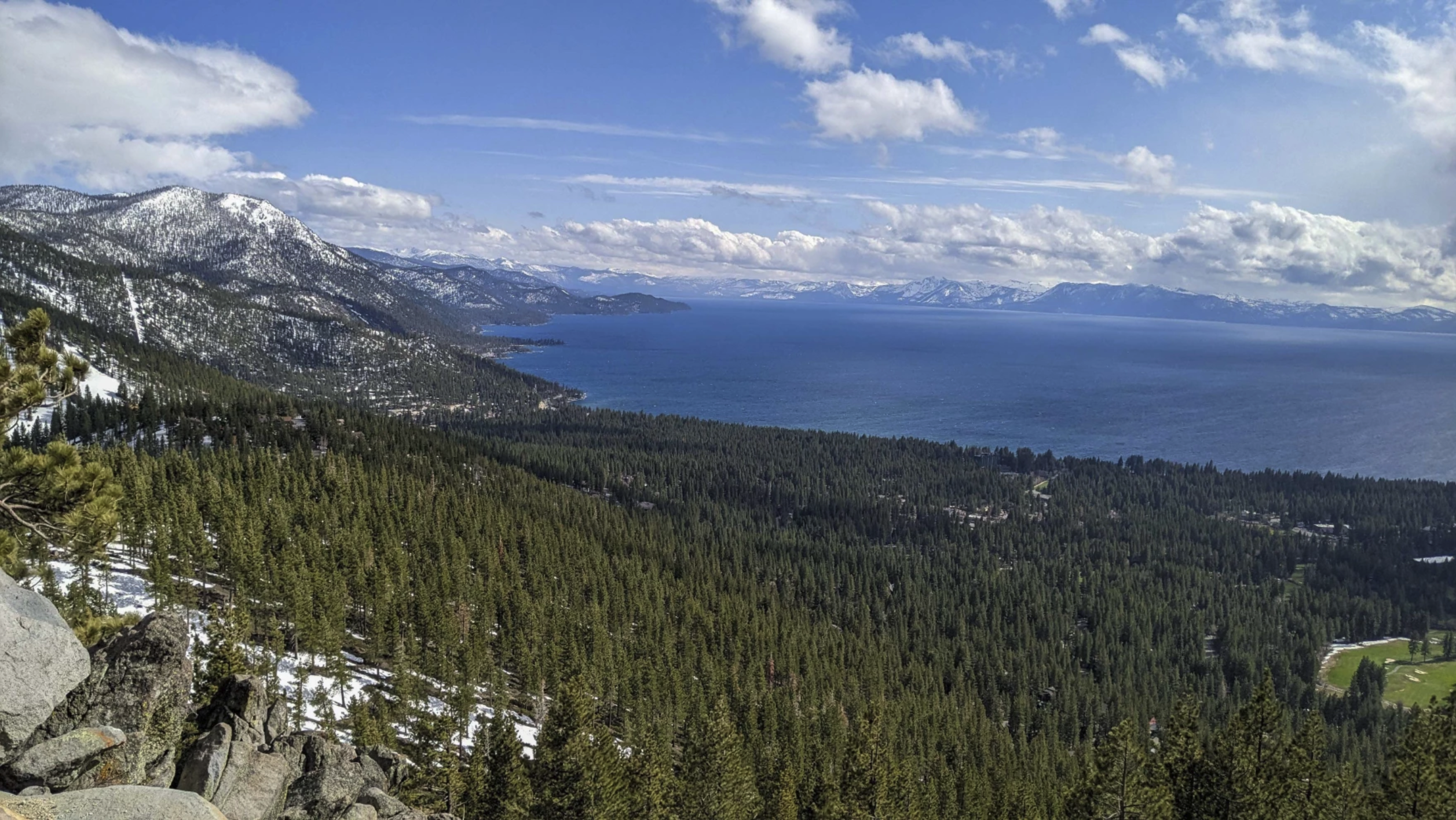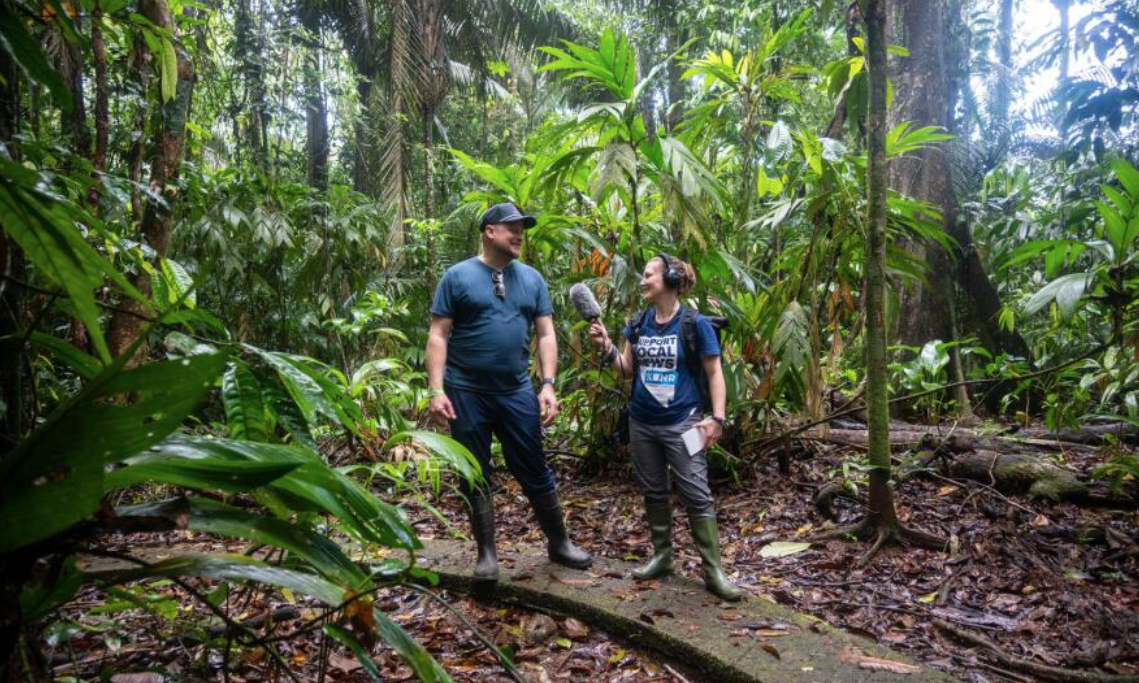This story was shared with permission from KUNR Public Radio. For an audio version of the story, please visit the KUNR website.
In a classroom lined with shelves of rock samples on the Western Nevada College campus, Dr. Winnie Kortemeier sat examining a tray of small, black stones she collected from the shores of Lake Tahoe near Tahoe City.
The basalt samples in her hand were integral to her research she presented at the Geological Society of America’s annual conference in September, which named Lake Tahoe as the third oldest lake in the world and oldest in North America.
Kortemeier became interested in researching this topic during a field trip nearly 20 years ago.
“In 2005 I went on a geology field trip at Lake Tahoe, and I was informed by the leader of the field trip that these young volcanic rocks in the northwest corner up near Tahoe City had never been studied in any kind of detail,” Kortemeier said. “And so I raised my hand and said, ‘I’m going to study them.’”
This sent Kortemeier down a path of discovery. Through studying samples of volcanic basalt rock from the lake shore, she was able to piece together the past.
“The basalt up at Tahoe flowed as lava flows across the landscape, and then, lucky for us, they interacted with lake water.” Kortemeier said. “I knew that the basalt had interacted with lake water and with lake sediments, which means the lake has to be at least as old as the basalt.”
While holding a rock sample, she explained that the lava likely flowed from a series of cinder cone volcanoes. When this hot magma reached the waters of an early form of Lake Tahoe, it underwent a measurable change.
“If you look at this sample, it’s got a dark core, and then around the outside edge is this glassy black glass. And then that black glass reacts with lake water and forms this orange surface, which is called palagonite.” Kortemeier said. “That tells us, okay, these rocks definitely reacted with water. And that was Lake Tahoe in its early form.”

Kortemeier knew that the lake was at least as old as this basalt flow, which she was able to radiometrically date to at least 2.3 million years old.
This is a pretty striking number. Kortemeier said lakes are usually young, and get shallower over time as sediments wash into them from rivers and snow. But not Lake Tahoe – it has gotten deeper over time because of fault lines running through it.
“You get earthquakes, and that drop[s] the lake bottom down and relatively lift[s] up the outlet of Lake Tahoe. So through time, Lake Tahoe has gotten deeper, not shallower. And that’s unusual for a lake,” Kortemeier said.
Kortemeier dated the basalt flows as part of her PhD back in 2009, but it wasn’t until more recently that she began to compare this age to other lakes around the world. She looked for hard data, similar to her research, and found out just how unique Lake Tahoe is.
“I started looking at all these other lakes that had these kind of outlandish numbers, and I would go in search of the data,” Kortemeier said. “Lake Baikal is the oldest. The second is Lake Tanganyika in east Africa. And then Lake Tahoe is third, which means oldest in North America.”
Lake Baikal in Russia and Lake Tanganyika are similar to Tahoe tectonically – they both are fault basins getting deeper over time.
Kortemeier said although this research doesn’t change anything about the lake, it does highlight one of the many ways in which it is unique.
“It’s so deep, it’s the biggest alpine lake in North America. It’s second deepest after Crater Lake in North America,” Kortemeier said. “I think it’s just another reason to love Lake Tahoe and to just realize it’s a really special Lake, and we are just lucky to be near it.”
Kat Fulwider is the 2024 fall intern for KUNR and the Hitchcock Project for Visualizing Science.






